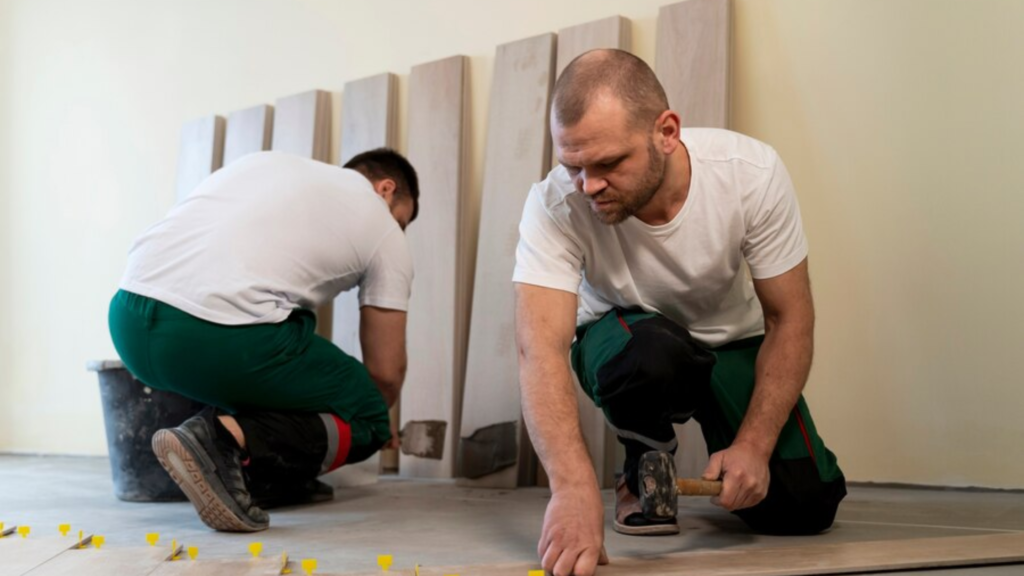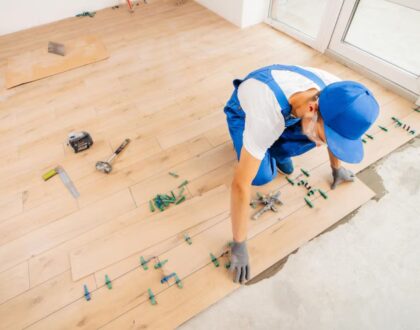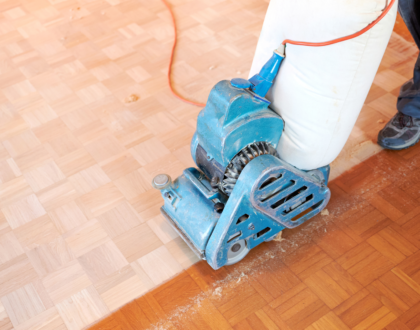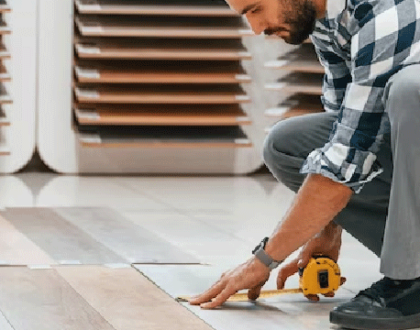A Comprehensive Guide to Find Quality Hardwood Flooring Services in Charlotte, NC

Selecting the right hardwood flooring services can transform your space into a stunning and inviting environment. In the vibrant market of Charlotte, NC, hardwood flooring is a favored choice. Thus, finding the perfect service provider is essential.
Your flooring choice sets the tone for your home’s ambiance and reflects your personal style. With a wide range of options available, from classic to contemporary hardwood designs, Charlotte offers a vibrant marketplace catering to diverse tastes and preferences.
Before starting your flooring project, it’s crucial to explore the variety of options and select a service provider that aligns with your vision and expectations.
How to Find the Right Flooring Service Provider
Researching Your Options
When it comes to researching hardwood flooring services in Charlotte, there are several possibilities to explore. Start by leveraging online resources such as Google searches, review websites like Yelp and Angie’s List, and social media platforms like Facebook and Instagram.
These platforms offer insights into the reputation and quality of service provided by various companies. Reading customer reviews and testimonials is key to understanding the experiences of past clients and determining whether a company is trustworthy.
Additionally, don’t hesitate to ask friends, family, and colleagues for recommendations. Personal referrals from trusted sources can be invaluable in narrowing down your Hardwood floor refinishing options.
Evaluating Company Credentials
Before committing to a hardwood flooring company, it’s essential to verify their credentials. This includes checking for licenses, bonds, and insurance coverage. These credentials not only demonstrate a company’s professionalism but also provide you with protection in the event of any unforeseen issues or accidents during the project. You can usually find this information on the company’s website or by directly asking them. Additionally, take the time to research the company’s background and reputation to ensure they have a track record of delivering high-quality workmanship.
Requesting Quotes
Once you’ve compiled a list of potential hardwood flooring companies, the next step is to request quotes for your project. Contact each company and provide them with details about the size of the area to be floored and any specific requirements you have.
When comparing quotes, consider factors such as the materials used, labor costs, and project timeline. Keep in mind that the least expensive option is not always the best choice. Quality and reliability are also important factors you must consider. Take the time to review each quote carefully and ask any questions you may have before making a decision.
Assessing Experience and Expertise
When considering hardwood flooring services, it’s vital to delve into the company’s experience and expertise. Inquire about the duration of their tenure in the industry, as longevity often reflects reliability and quality. Specialization in hardwood flooring is crucial, as it indicates a deep understanding of the intricacies involved in working with wood materials. Take the time to review past projects and examples of their craftsmanship to assess their skill level and attention to detail.
Visiting Showrooms
Visiting hardwood flooring showrooms in person offers numerous benefits in the decision-making process. By examining samples and displays firsthand, you can get a better sense of the texture, color variations, and overall quality of the materials.
Look for a wide selection of options to ensure you find the perfect fit for your space. Additionally, pay attention to the professionalism and customer service of the showroom staff. This reflects the company’s commitment to customer satisfaction.
Understanding Warranties and Guarantees
Warranties and guarantees play a crucial role in protecting your investment in hardwood flooring. Reputable companies typically offer warranties on both the materials and installation services. It’s essential to understand the terms and conditions of these warranties, including coverage duration and any exclusions. Clear communication regarding warranties and guarantees ensures peace of mind and provides recourse in case of any issues or defects.
Getting Everything in Writing
It’s essential to get everything in writing to avoid misunderstandings and ensure a smooth project experience. A detailed project agreement should outline all aspects of the project, including costs, timelines, and warranties.
This document serves as a reference point and provides clarity and transparency for both parties involved. Be sure to review the contract thoroughly before signing and address any concerns or questions with the hardwood flooring company.
Following Up with References
Utilizing references is a valuable tool in validating a hardwood flooring company’s reputation and reliability. Start by requesting a list of references from the company and reach out to these past clients for feedback. When contacting references, ask specific questions about their experience working with the company. This includes the quality of workmanship, adherence to timelines, and overall satisfaction with the project.
Additionally, inquire about any challenges or issues that arose during the project and how they were resolved. Gathering insights from past clients can help you better understand the company’s track record and determine if it is the right fit for your project.

Discovering the Wonders of Hardwood Floor Refinishing
Hardwood floor refinishing is a transformative process that breathes new life into old, worn-out hardwood floors. It reveals their natural beauty and restores them to their former glory. This renovation enhances the aesthetic appeal of your space. It also adds value to your home. Let’s explore why Hardwood Floor Refinishing is a popular choice among homeowners.
One of the most remarkable aspects of hardwood floor refinishing is its ability to renew and rejuvenate even the most tired and damaged floors. Over time, hardwood floors can become scratched, dull, and damaged due to foot traffic, furniture movement, and other environmental factors. Refinishing involves sanding down the surface of the wood to remove imperfections and applying a fresh coat of stain and finish. The process effectively erases years of wear and tear.
Beyond cosmetic improvements, hardwood floor refinishing offers practical benefits as well. By addressing minor scratches, dents, and discoloration, refinishing helps extend the lifespan of your hardwood floors. It postpones the need for costly replacements. It also provides an opportunity to repair any fundamental structural issues. This includes warped or uneven boards, ensuring a sturdy and stable foundation for years to come.
Refinishing also allows you to customize the look of your hardwood floors to suit your personal style and preferences. With a wide range of stain colors and finishes available, you can achieve a variety of looks. This can be anything from classic and timeless to modern and sleek. Whether you prefer a warm, rich tone or a cool, contemporary hue, refinishing gives you the flexibility to create the perfect ambiance for your home.
Another benefit of hardwood floor refinishing is its eco-friendly nature. Unlike replacing hardwood floors, which require the extraction and disposal of old materials, refinishing preserves existing resources and minimizes waste. By breathing new life into your existing floors, you’re reducing your environmental footprint and contributing to sustainability efforts.
Hardwood floor refinishing is a transformative process that offers numerous benefits. Whether you’re restoring an old home or refreshing the look of your current space, refinishing allows you to rediscover the wonders of hardwood floors and enjoy their beauty for years to come.
A Step-by-Step Guide to Engineered Floor Installation
Engineered hardwood flooring offers the timeless beauty of natural wood with added durability and versatility. This makes hardwood floors a popular choice for homeowners. Installing engineered floors is a straightforward process that can be completed with the right tools and knowledge. Here’s a step-by-step process to help you navigate through installation:
- Prepare the Subfloor
Before beginning the installation, ensure that the subfloor is clean, dry, and level. Remove any existing flooring material, such as carpet or tile, and address any unevenness or damage in the subfloor. Use a moisture meter to check the moisture levels, as excessive moisture can damage the engineered wood. - Acclimate the Flooring
Allow the engineered hardwood flooring to acclimate to the room’s environment for at least 48 hours before installation. Stack the flooring boxes in the room where they will be installed. Keep them away from exterior walls and direct sunlight. - Lay the Underlayment
To give the subfloor cushioning, moisture protection, and sound insulation, install an appropriate underlayment. Whether you’re using foam, felt, or cork underlayment, be sure you follow the manufacturer’s directions. - Plan the Layout
Plan the layout of the engineered flooring. Take into account the room’s dimensions, doorways, and any obstacles like cabinets or fireplace hearths. Start laying the flooring parallel to the longest wall in the room. This creates a visually appealing look. - Install the First Row
Begin installation by laying the first row of engineered flooring along the starting wall, with the tongue side facing the room. Put spacers in between the wall and the flooring to make room for expansion. Secure the first row in place by nailing or stapling through the tongue, ensuring a snug fit. - Continue Installation
Continue installing the engineered flooring row by row, interlocking the tongue and groove joints of each plank. The planks should be gently tapped into place using a rubber mallet and tapping block. This ensures tight seams between each row. Stagger the end joints of adjacent rows for a more stable and visually appealing installation. - Cut and Fit
As you approach the end of each row or encounter obstacles like door frames or corners, measure and cut the engineered flooring planks accordingly using a saw. Be sure to leave expansion gaps around obstacles to accommodate for the natural expansion and contraction of the wood. - Complete the Installation
Once you’ve installed the final row of engineered flooring. Remove the spacers and install trim or moldings to cover the expansion gaps along the walls. Use transition strips to seamlessly connect the engineered flooring to other types of flooring in adjoining rooms. - Finish and Seal
After installation, apply a suitable finish or sealant to protect the engineered hardwood flooring from scratches, stains, and moisture. Follow the manufacturer’s instructions for application and drying times. Allow the finish to cure before moving furniture back into the room.
By following these step-by-step instructions, you can successfully install engineered hardwood flooring in your home, adding beauty, durability, and value to your space.
Conclusion
Installing engineered hardwood flooring is a rewarding process. It enhances the beauty and functionality of your home. By following the step-by-step guide outlined above, you can achieve professional results while enjoying the benefits of durable and stylish flooring.
Engineered hardwood offers the timeless appeal of natural wood with added stability and versatility. This makes it an ideal choice for any room in your home. Whether you’re renovating your living room, bedroom, or kitchen, engineered flooring provides a durable and low-maintenance solution that withstands the test of time.
With proper installation and care, your engineered hardwood floors will continue to impress for years to come. It adds warmth, elegance, and value to your home environment.



